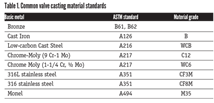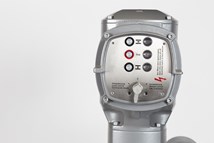Forecast for U.S. Valve Industry: No Growth Expected
For the first time since 2009, U.S. industrial valve shipments are predicted to have almost no growth in 2016, according to the annual forecast of the Valve Manufacturers Association (VMA). VMA’s forecast indicates shipments will be up just $3 million over 2015 to be about $4.5 billion total. “Our industry crested in 2008 at about $4 billion before taking a tumble from the recession.
#VMAnews
“One of the reasons for the flatness from 2014 to 2015 is that the petroleum and power industries have encountered significant downturns, which affects our overall numbers,” he adds.
Meanwhile, of the 15 end-user industries VMA tracks, the two that have the greatest market share are expected to gain even more next year: Chemical now makes up 18.7% of the market (compared to last year’s 17.8%) and water/wastewater holds 17.8% (compared to 16.9% in 2015). Those industries are gaining ground over the next largest industry, power generation, which fell about 0.4% last year; petroleum production, which fell by 1.5%; and a few of the smaller industries related to oil. Petroleum refining, on the other hand, actually gained slightly to become about 11.1% of the industry (it was about 10.8% last year).
Also, “Our industry going forward stands to benefit from the recovery in the building industry. We saw a significant increase in commercial construction for 2016—it now makes up 5% of our industry compared to 4.5% last year,” says Bill Sandler.
Exports, which have been responsible for some of the growth in the valve industry the last few years, will gain only slightly this year, rising by $5 million in 2016 to $955 million, while domestic shipments are expected to lose a little ground (from $3.512 billion in 2015 to $3.510 billion in 2016).
As far as valve types, the growth has been steadily upward for all types over the last decade with automated valves growing the most—they stood at about $1.4 billion in shipments for 2015 compared to ball valves, which were at $818 million.
Judy Tibbs is editor of VALVE Magazine and director of education for VMA. For additional information, go to VMA.org > VMA Press Room.
RELATED CONTENT
-
CASE STUDY: Stainless-steel Piping Solutions for Remote Mine Sites
Stainless-steel piping has a long history on mine sites. The robust, corrosion-resistant material is ideal for mine process piping systems that are designed to provide a long service life.
-
Valves in Oxygen Service
In his presentation at VMA’s 2017 Technical Seminar, Kurt Larson, a process control engineer for Air Products, spoke about the inherent danger of the oxygen production business and how it is particularly important for end users and valve manufacturers to work closely together.
-
An Interview With ... Matt Thiel
Matt Thiel, president of AUMA Actuators, was named chairman at VMA’s 2022 annual meeting.











 Unloading large gate valve.jpg;maxWidth=214)